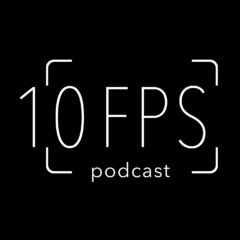🎙️ Episode Overview
10 Frames Per Second (a photojournalism podcast) invites Lisa Krantz, PhD (assistant professor, former San Antonio Express‑News photographer, two‑time Pulitzer finalist) and Lucian Perkins (two‑time Pulitzer‑winning photographer) to discuss:
- Early career paths – from a 10‑year‑old’s point‑and‑shoot to professional newsroom work.
- Finding internships – applying to 30+ positions, persistence over a perfect portfolio.
- Empathy vs. objectivity – drawing on Janet Blank’s An Ethic of Empathy in Journalism.
- Mass‑shooting coverage – the Uvalde 365 project and lessons on consent, “pool” reporting, and secondary trauma.
- Teaching tomorrow’s journalists – foundational skills, multimedia fluency, and real‑world assignments
📋 Quick Takeaways
- Empathy can coexist with objectivity and makes stories more powerful.
- Trauma‑informed practices protect both subjects and journalists.
- Long‑term projects (e.g., Uvalde 365) build trust and deeper impact.
- Internships remain essential, though the media landscape is now digital‑first.
- Self‑care matters – running, hobbies, and community support prevent burnout.
🔑 Core Insights
1. Empathy Is a Journalistic Tool
- Asking permission every time and re‑checking comfort levels keeps subjects safe.
- Empathy enhances objectivity; it guides what to show, not what to show.
2. Trauma‑Informed Reporting
- Use consent checklists and allow subjects to opt‑out without pressure.
- Provide post‑shoot debriefs for both interviewees and the photographer.
3. Long‑Term Storytelling Wins
- Example: Uvalde 365 – a year‑long visual record that gave community members a voice and earned a Pulitzer in National Reporting.
- Investing time creates trust, leading to richer imagery and stronger audience connections.
4. Internships & Digital Shift
- Apply broadly; show up even with a modest portfolio.
- Today’s newsroom expects photo, video, audio, and caption writing skills.
5. Self‑Care Strategies
- Running/ultra‑marathons (Lisa’s favorite outlet).
- Creative side‑projects (Holga series, “cowboys & cul‑de‑sacs”).
- Set digital boundaries to avoid constant trauma exposure.
🛠️ Practical Advice for Emerging Photojournalists
| Skill | How to Develop |
|---|---|
| Technical | Master manual exposure, focus, and lighting; learn basic video editing (Premiere/Final Cut). |
| Storytelling | Practice narrative arcs; write concise captions; pitch long‑form projects. |
| Trauma‑Informed | Study basic psychology (as Lisa did); create consent forms and check‑in scripts. |
| Self‑Care | Schedule regular physical activity; maintain hobbies; seek peer support or counseling. |
| Networking | Follow up every internship interview; keep alumni contacts warm; showcase personal projects online. |
❓ Frequently Asked Questions
Q: Can I be empathetic without losing objectivity?
A: Yes. Empathy guides you to ask the right questions and respect subjects, while still reporting facts.
Q: What’s the fastest way to break into photojournalism today?
A: Combine internships with a multimedia skill set and publish personal long‑term projects that demonstrate ethical depth.
Q: How do I avoid secondary trauma?
A: Use trauma‑informed checklists, debrief after intense shoots, and maintain regular self‑care routines (e.g., running, hobbies).
📚 Final Thoughts
Episode 159 of 10 Frames Per Second shows that empathy, ethics, and endurance are the new cornerstones of photojournalism. By blending human‑first storytelling with multimedia fluency and self‑care, emerging journalists can thrive in a digital‑first news world while honoring the people behind the images.
👉 Ready to apply these lessons? Start a small long‑term project, reach out for an internship, or lace up for a run—every step moves you toward responsible, impactful visual storytelling.
photojournalism, internships, Pulitzer Prize, mass shooting, trauma‑informed journalism, empathy, Uvalde shooting, Sutherland Springs, AR‑15, American Icon series, long‑term storytelling, community journalism, digital revolution, local newspaper decline, nonprofit funding for news, Catch Light program, visual storytelling, mental health, running for self‑care, Holga camera, documentary filmmaking, graduate journalism education, research dissertation, ethics in journalism, consent in photography, pool‑system coverage, Texas news landscape, Montana journalism program, multimedia journalism, grant writing. Tamir Kalifa, episode 99
Podcast: Play in new window | Download
Subscribe on your preferred platform! Apple Podcasts | Spotify | Amazon Music | Android | Pandora | iHeartRadio | JioSaavn | Podchaser | Gaana | TuneIn | Deezer | Anghami | Youtube Music | RSS
